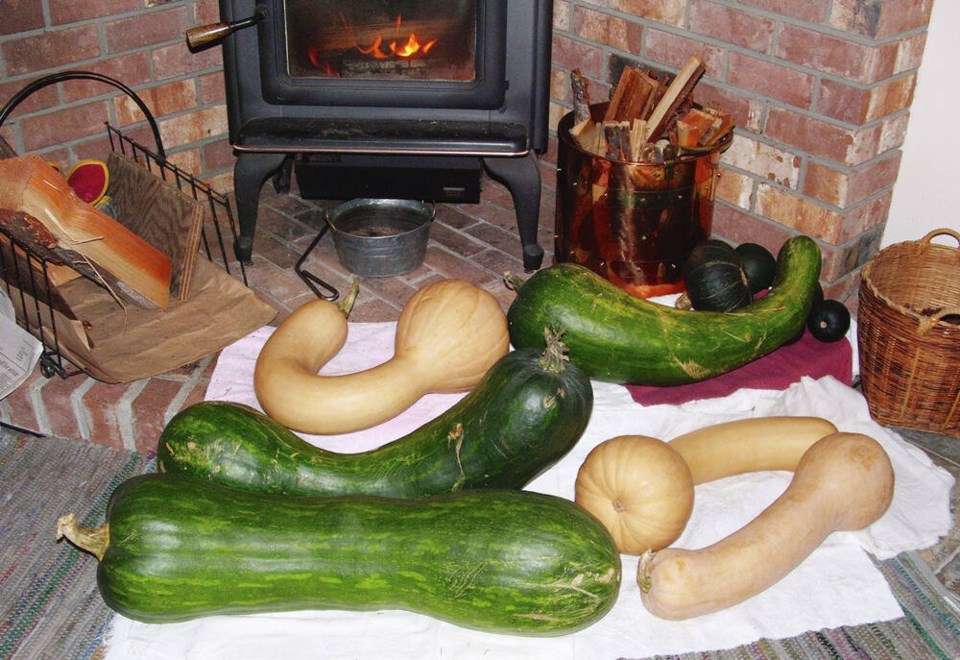For gardeners, this can be a sweet time in the year. In my home I’m in the process of eating the last of the season’s tomatoes. The garlic and onion harvest is safely stored, fruit and vegetable packages are tucked away in the freezer, and the winter squashes are “curing” near the warmth of the wood store. Hardy greens and root vegetables remain out in the outdoor garden “pantry” for use as needed.
Fortunate are those with their own, or other accessible, garden spaces for dabbling, experimenting, and learning in. As trees and shrubs, flowers and food plants are nurtured, concerns meld away into the soil, at least for a while.
I value my “solo” gardening sessions as times of quiet and peace. Routine seasonal projects are blessedly “mindless” and yield moments of reassuring familiarity and calm.
Two weeks ago, a solo foray into the garden was more than satisfying. At last, the weather had become suitably cool and the plot I had prepared for planting garlic was thoroughly rain-dampened.
Marking out the rows by laying the long handle of a hoe along the ground, separating five large bulbs into individual cloves and planting them, and lightly tamping down the soil covering the clove tips with the hoe’s blade were all part of a familiar routine, one bringing with it the anticipation of green shoots in early spring and the harvesting of fat, juicy, flavour-packed bulbs in July.
The garlic planted, I turned my attention to the three compost heaps that had been seeded with winter squash in the spring. The vines had almost completely died down. It was time to bring in the impressive harvest.
I had already brought two Black Forest kabocha squashes and several little round South African Gem squashes into the house. Remaining to be harvested were three mammoth Lunga di Napoli (Long Naples, Napes Long), three Pennsylvania Dutch Crookneck, one more Black Forest and several more Gem squashes.
With great difficulty I managed to lift and deposit the heaviest squashes into a wheelbarrow along with the smaller ones and stagger to the carport with them. I dealt with them a few at a time, washing soil and debris from the skins and bringing them into the warm air around the wood stove.
A period of seven to 10 days in warmth (around 27 C) in a place with good air circulation helps to finish hardening the skins and heal scratches and cuts. This “curing” process helps the fruits to store well.
During the curing stage, I keep the squashes rotated to maintain the most even levels of heat possible. A ceiling fan in the room helps.
Winter squash and pumpkins store best in cool (ideally, around 10 C) conditions. I use the shelves of my plant light stand at the north-facing, always cool front door entryway.
Once stored, except for the very small squashes I wait a few weeks before beginning to use them. The interval allows flavours in the flesh to develop and sweeten further. The first fruit I’ll be cutting into is the last Lunga di Napoli to form on the vines. It had less time than the two others to mature, and the blossom end is not as filled out as the others. I suspect it won’t store as well as the other two Lungas.
Black Forest kabocha squash makes a wonderful “pumpkin” pie, as does Lunga. Pennsylvania Dutch Crookneck, like Lunga, is long and easy to cut into and use. Both are multi-use, heirloom squashes.
Seed company listings vary from year to year. To find Canadian sources for any of these varieties visit the Seeds of Diversity site at seeds.ca and click onto Canadian Seed Catalogue Index.
GARDEN EVENTS
VHS meeting. The Victoria Horticultural Society will meet on Tuesday, Nov. 7, from 7:30 to 9 p.m. in the Garth Homer Centre, 813 Darwin Ave. Gary Lewis, owner of Phoenix Perennials in Richmond, will offer a companion presentation to his recent book, The Complete Book on Ground Covers: 400 Plants that Reduce Maintenance, Control Erosion, and Beautify the Landscape. Non-member drop-in fee $5. vichortsociety.org.
Floral arts. The Mid Island Floral Art Club will meet on Thursday, Nov. 9, at 2 p.m. in St. Stephen’s Church hall, 150 Village Way in Qualicum Beach. Shirley Basciano will demonstrate “Parallel Design.” Guests are welcome. Admission $5. Information at [email protected] or 250-757-8969.



